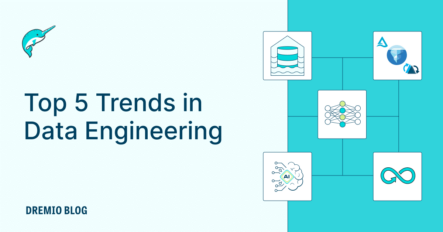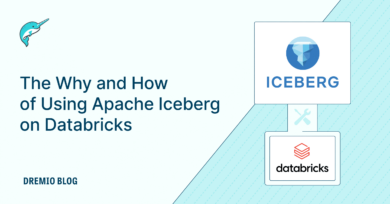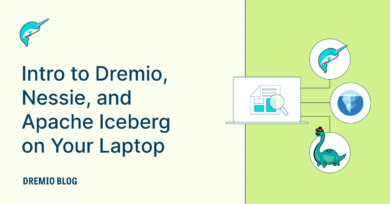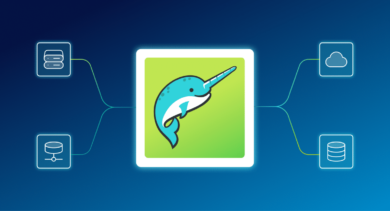
Data engineering is a constantly evolving field with new technologies and practices emerging faster than ever before. In recent years, several trends have appeared in the world of data engineering that are shaping the way data is stored, processed, and analyzed. Let’s explore the top 5 trends in data engineering: Data Lakehouses, Open Table Formats, Data Mesh, DataOps, and Generative AI.
Data Lakehouses
- Data Lakehouses are a new paradigm in data storage and processing that combine the best features of data lakes and data warehouses.A data lakehouse combines the performance, functionality and governance of a data warehouse with the scalability and cost advantages of a data lake. With a data lakehouse, engines can access and manipulate data directly from data lake storage without copying data into expensive proprietary systems using ETL pipelines.
The Data Lakehouse architecture is becoming popular because it provides a single, unified view of all enterprise data, which can be easily accessed and analyzed in real-time. This makes it easier for organizations to extract insights from their data and gain a competitive advantage.
Open Table Formats
- Open Table Formats are a new standard for storing and processing data that promote interoperability between different tools and platforms. Traditionally, each tool or platform had its own proprietary format for storing data, which made it difficult to transfer data between systems or analyze data across different platforms (vendor lock-in and data silos).
Open Table Formats like Apache Iceberg, Delta Lake and Hudi provide a table format that is optimized for performance and supports a wide range of data types. This makes it easier for organizations to work with data from different sources and use different tools for processing and analyzing data.
Open table formats allow interaction with data lakes as easily as interaction with databases, using tools and languages. A table format allows abstracting different data files as a singular dataset, a table.
Data in a data lake can often be stretched across several files. This data can be analyzed using R, Python, Scala and Java using tools like Spark and Flink. Being able to define groups of these files as a single dataset, such as a table, makes analyzing them much easier (versus manually grouping files, or analyzing one file at a time). On top of that, SQL depends on the idea of a table and SQL is probably the most accessible language for conducting analytics.
Data Mesh
- Data Mesh is a new approach to data architecture that emphasizes the decentralization of data ownership and management. In a traditional data architecture, data is centralized in a single repository and managed by a central team. In a Data Mesh architecture, data is owned and managed by individual teams or business units, and access to data is governed by a set of shared standards and protocols.
Data Mesh enables organizations to scale their data architecture by allowing different teams to manage their own data and build their own data products. This reduces the burden on the central data team and enables faster data processing and analysis.
DataOps
- DataOps is an approach to data engineering that applies DevOps principles to the data engineering process. DataOps emphasizes collaboration, automation, and continuous delivery in the data engineering process, with a focus on creating data management practices that are scalable, reliable, and efficient.
DataOps enables organizations to automate the entire data engineering process, from data ingestion to data processing and analysis. This reduces the risk of errors and enables faster delivery of data products. Data as code enables collaboration between data scientists, data engineers, and other stakeholders, who can work together to develop and maintain data pipelines as a team. By adopting this methodology, we can ensure data quality, reduce errors, and increase the efficiency of data operations.
Generative AI
- Generative AI is a new field of AI that enables machines to create content, such as text, images, and videos. This technology has significant implications for data engineering, as it can be used to generate semantics, dictionaries, and synthetic data, which can be used to train ML models.
Generative AI is a new field of AI that enables machines to create content, such as text, images, and videos. This technology has significant implications for data engineering, as it can be used to generate semantics, dictionaries, and synthetic data, which can be used to train ML models.
Data engineers must understand how to create and work with generative AI models. They must also be able to integrate generative AI into existing data pipelines and ensure that the models are producing accurate and relevant content.
In addition, many organizations are training and operating their own generative AI models. Data engineers need to be aware of the data requirements to support generative AI training, inference, and governance.
Conclusion
The field of data engineering is constantly evolving, and new trends and technologies are emerging all the time. We have explored Data Lakehouses, Open Table Formats, Data Mesh, DataOps, and Generative AI - these are all important developments that are shaping the future of data engineering. Organizations can gain a competitive advantage by unlocking the full potential of their data by staying up to date with the latest trends and adopting new technologies and practices.



